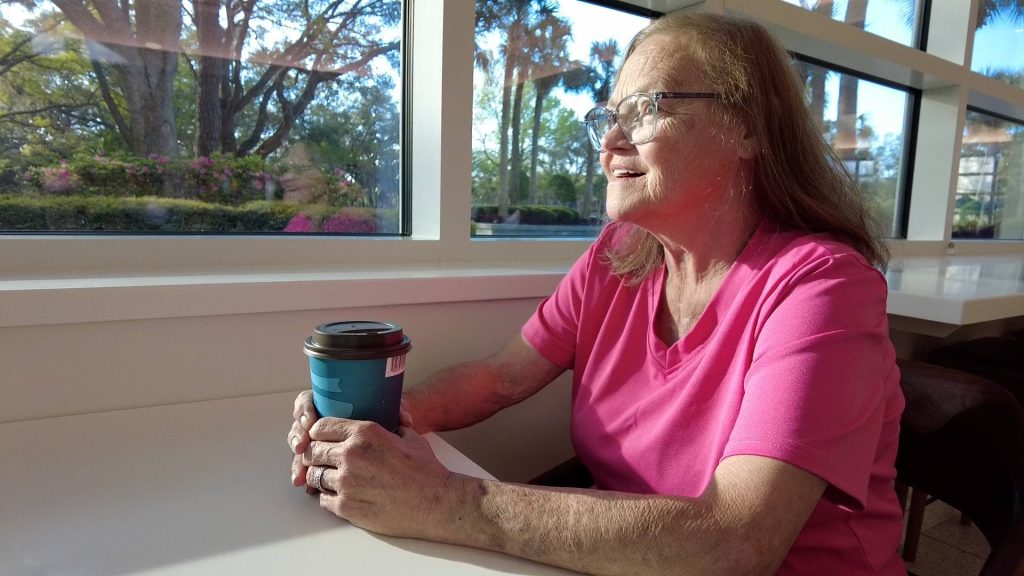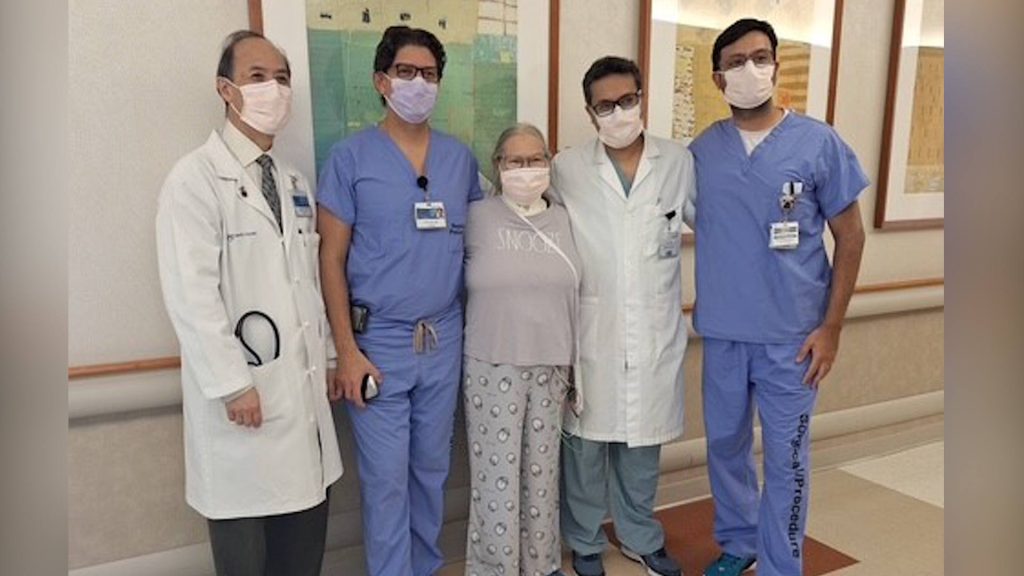
Sue Baker started having issues with her heart in 2015. By 2019, she began experiencing heart failure. Living in Southeast Georgia, her condition landed her in the hospital seven times before the last visit led to her being transferred to Mayo Clinic in Florida, nearly 90 minutes away, critically ill.
"She was really sick — in cardiogenic shock, intubated, connected to a breathing machine — she was not going to make it," says Dr. Parag Patel, a Mayo Clinic transplant cardiologist. "She only had three to six months to live, and we needed to act fast."
Journalists: Broadcast-quality video pkg (2:21) is in the downloads at the end of the post. Please courtesy: "Mayo Clinic News Network." Read the script.
Sue's situation had become dire. She was presented with two options: enter hospice care or have a left ventricular assist device (LVAD) implanted to serve as a bridge to a heart transplant. While she chose the LVAD to buy more time, by 2023 she was experiencing dangerous heart rhythms and other challenges.
Complicating matters, her body was producing more antibodies, making it increasingly difficult to find a suitable transplant donor.
"It was devastating to know that I'm actually going to die," says Sue. Still, she did not lose hope. "You just grab hold of God and keep praying," she says.
Sue's care team also remained determined to help her hold on. They explored an innovative approach — called Heart After Liver Transplant with a Domino Liver to another patient (HALT-D) — that had shown success in patients with similar antibody counts.
HALT-D, however, had never been attempted on someone with a heart pump like hers. This procedure would be a first for Mayo Clinic, at any of its transplant sites.
Although Sue's liver was healthy, she would need to get not just a heart transplant but also a donor liver to help remove the antibodies from her body and reduce the risk of her new heart being rejected. This meant a rare and complex domino transplant, involving both a liver and a heart, where Sue's liver would also become part of the donor chain.
"We take the liver of the patient who's receiving the heart after liver, and we take that liver and we put it into another recipient so that we do not waste an organ," says Patel.
Preparing for this complex procedure involved extensive multidisciplinary collaboration between a variety of Mayo Clinic departments. Sue spent months in the hospital, waiting for a match. During her wait, fellow patients and staff began calling her "mama" for the care and support she provided everyone else, despite her own challenges.
"We get to know each other and kind of help each other out," says Sue. "That was a lot of healing and helpfulness there."

"Sue not only helped people on the floor, but she's helped other patients who didn't have an opportunity" for transplant, says Patel.
Finally, in September 2024, the domino transplant was performed successfully.
Today, Sue is on the path to recovery, growing stronger each day. Her motivation to live is fueled by the desire to honor her donor, whose gift has given her a second chance at life.
"I would love to thank and meet the family," says Sue. "I'm not going to sit back and do nothing. That person will always be special."
Her story is a testament to the power of medical innovation, the dedication of healthcare professionals, and the resilience of the human spirit.
"I love her, and I appreciate the doctors and all the nurses that have been so loving and caring for Sue,” says Charlene Taylor, Sue's caretaker.







